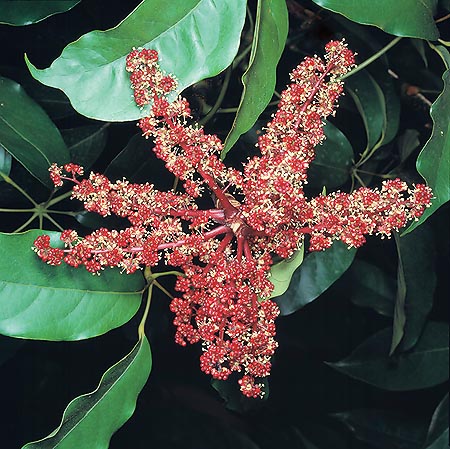Family : Araliaceae

Text © Pietro Puccio

English translation by Mario Beltramini

Adapts also to the Mediterranean climate. Medical virtues © Giuseppe Mazza
The genus is honoured to the German botanist Jacob Christoph Scheffler († 1742).
The name of the species comes from the Latin “venula” = small vein, with reference to the leaves venations.
Evergreen, sarmentose shrub, it has, on 8-20 cm long petioles, compound leaves, with 5-7 elliptic oblong leaflets, 10-20 cm long and 4-8 cm broad, with sharp apex, entire margins and prominent venations. The inflorescences are terminal panicles, with cream or pink flowers assembled in globose umbrellas. The fruits are yellow, globose, with a diameter of about 6 mm. It reproduces by seed and by cutting.
Not much cultivated plant outside its origin area, its cultivation can be tried in the tropical and in the humid subtropical zones, both in partly shaded position and in full sun. Since time, leaves and flowers are variously utilized in the traditional medicine by the local populations.
Recent studies have found in the plant the presence of bio-active compounds of possible interest in various fields of the medicine.
Synonyms: Paratropia venulosa Wight & Arn. (1834); Heptapleurum venulosum (Wight & Arn.) Seem. (1865).
→ To appreciate the biodiversity within the ARALIACEAE family please click here.
